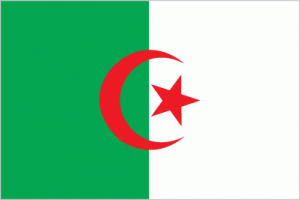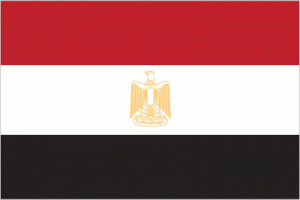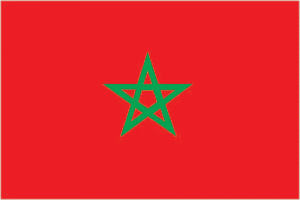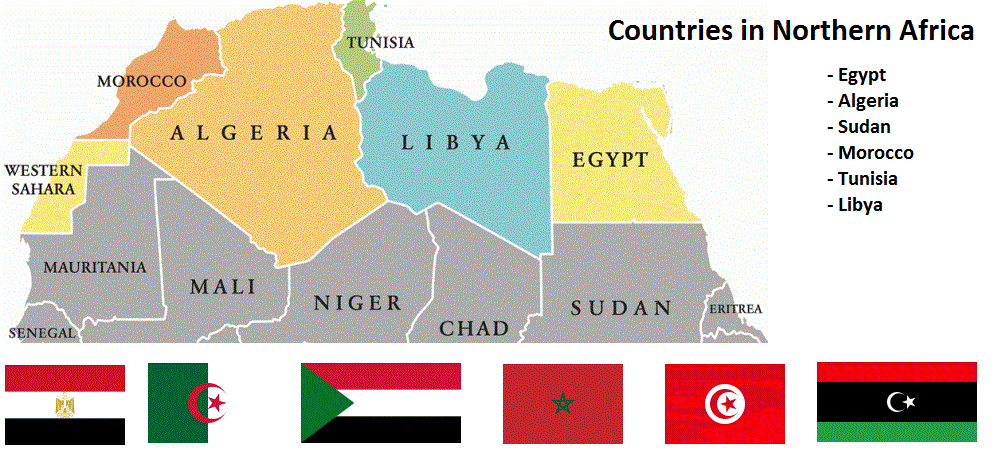Countries in Northern Africa and Their Capitals
How Many Nations in Northern Africa
Located in north part of Africa, Northern Africa is composed of 7 countries. Here is an alphabetical list of all countries in North Africa: Algeria, Egypt, Libya, Morocco, Sudan, South Sudan, and Tunisia.
1. Algeria
Algeria is a country in North Africa and on the surface the largest country in Africa and borders Tunisia, Libya, Niger, Mali, Morocco and Mauritania. The capital of Algeria is called Algiers and the official language is Arabic.
 |
|
2. Egypt
Egypt is a republic in eastern North Africa on the Mediterranean and the Red Sea. Egypt borders the Mediterranean Sea to the north, the Gaza Strip and Israel to the northeast, the Red Sea to the east, Sudan to the south and Libya to the west. About 80% of Egypt’s residents live near the great river Nile.
 |
|
3. Libya
Libya, formally The state of Libya is a state in North Africa. Libya is located between Egypt in the east, Sudan in the southeast, Chad and Niger in the south, Algeria and Tunisia in the west and the Mediterranean Sea in the north with the island of Malta as the nearest country.
 |
|
4. Morocco
Morocco, formally the Kingdom of Morocco is a country in western North Africa. It is one of the northernmost countries in Africa. The country borders Algeria, Western Sahara, Spain and the Atlantic and Mediterranean.
 |
|
5. Sudan
Sudan, formally the Republic of Sudan, sometimes called North Sudan, is a country in North Africa, which is often also considered part of the Middle East.
 |
|
6. South Sudan
South Sudan, formally the Republic of South Sudan, is a state in East Africa. South Sudan borders Sudan to the north, Uganda, Kenya and the Democratic Republic of the Congo to the south, Ethiopia to the east and the Central African Republic to the west. The nation was formed in 2011 by breakaway from Sudan.
 |
|
7. Tunisia
Tunisia, formally the Republic of Tunisia is a state in North Africa, on the southern coast of the Mediterranean. The country borders Algeria to the west and Libya to the southeast.
 |
|
Countries in Northern Africa by Population and Their Capitals
As noted above, there are seven independent countries in the Northern Africa. Among them, the largest country is Egypt and the smallest one is Libya in term of population. The full list of Northern African countries with capitals is shown in the table below, ranked by latest total population.
| # | Country | Population | Land Area (km²) | Capital |
| 1 | Egypt | 98,839,800 | 995,450 | Cairo |
| 2 | Algeria | 43,378,027 | 2,381,741 | Algiers |
| 3 | Sudan | 41,617,956 | 1,861,484 | Juba |
| 4 | Morocco | 35,053,200 | 446,300 | Rabat |
| 5 | Tunisia | 11,551,448 | 155,360 | Tunis |
| 6 | South Sudan | 12,778,239 | 619,745 | Juba |
| 7 | Libya | 6,777,452 | 1,759,540 | Tripoli |
Map of North African Countries

Brief History of Northern Africa
Ancient Civilizations
Predynastic and Early Dynastic Periods
Northern Africa’s history is deeply intertwined with some of the earliest known human civilizations. The region’s most famous ancient civilization is Ancient Egypt, which emerged along the Nile River. The Predynastic Period (c. 6000-3150 BCE) saw the development of early agricultural communities and the formation of political structures. This era culminated in the unification of Upper and Lower Egypt by King Narmer, marking the beginning of the Early Dynastic Period (c. 3150-2686 BCE).
Old, Middle, and New Kingdoms
The Old Kingdom (c. 2686-2181 BCE) is renowned for the construction of the Pyramids of Giza, including the Great Pyramid built for Pharaoh Khufu. This era was characterized by centralized power and monumental architecture. The Middle Kingdom (c. 2055-1650 BCE) followed a period of instability and is noted for its achievements in literature, art, and military organization.
The New Kingdom (c. 1550-1077 BCE) marked Egypt’s height of power and prosperity. Pharaohs such as Hatshepsut, Akhenaten, and Ramses II expanded the empire and initiated significant building projects, including temples and tombs in the Valley of the Kings. The New Kingdom’s decline began with invasions by the Sea Peoples and internal strife.
Carthage and the Phoenicians
In the western part of Northern Africa, the Phoenicians established the city of Carthage (modern-day Tunisia) around 814 BCE. Carthage grew into a major maritime and commercial power, dominating trade in the Mediterranean. The Carthaginian Empire reached its peak under the leadership of generals like Hannibal, who famously crossed the Alps to challenge Rome during the Second Punic War (218-201 BCE). However, Carthage ultimately fell to Rome in 146 BCE after the Third Punic War, leading to the establishment of the Roman province of Africa.
Roman and Byzantine Periods
Roman North Africa
Following the Punic Wars, Rome extended its control over Northern Africa. The region became a crucial part of the Roman Empire, known for its agricultural production, particularly wheat and olive oil. Cities such as Leptis Magna, Carthage, and Alexandria flourished under Roman rule, serving as vital centers of trade, culture, and learning.
Byzantine North Africa
After the fall of the Western Roman Empire in the 5th century CE, the Byzantine Empire (Eastern Roman Empire) maintained control over parts of Northern Africa. The Byzantine period saw the continuation of Roman cultural and architectural influences, as well as the spread of Christianity. However, the region faced increasing pressure from Berber tribes and internal strife, weakening Byzantine control.
Islamic Conquest and Dynasties
Early Islamic Expansion
In the 7th century, the Islamic Caliphate expanded into Northern Africa. The initial conquests began under the Rashidun Caliphs and continued under the Umayyad Caliphate. By the early 8th century, most of Northern Africa had been incorporated into the Islamic world. The spread of Islam brought significant cultural, religious, and linguistic changes, as well as the establishment of new cities and trade networks.
Fatimid and Almohad Dynasties
The Fatimid Caliphate, founded by the Shi’a Fatimid dynasty in the 10th century, established its capital in Cairo, transforming the city into a major political and cultural center. The Fatimids ruled much of North Africa, Egypt, and the Levant until the 12th century when the Ayyubid dynasty, founded by Salah al-Din (Saladin), took control.
The Almohad dynasty, a Berber Berber Muslim dynasty, emerged in the 12th century, originating from the Atlas Mountains of Morocco. The Almohads united much of Northern Africa and Spain under their rule, promoting a strict interpretation of Islam and fostering a period of intellectual and cultural flourishing. Their reign, however, began to wane in the 13th century, giving rise to new powers in the region.
Ottoman Era
Ottoman Conquest and Administration
By the early 16th century, the Ottoman Empire had extended its reach into Northern Africa. The Ottomans established control over major territories including modern-day Algeria, Tunisia, and Libya. Their administration brought stability and integration into the larger Ottoman trade network, which connected Europe, Asia, and Africa. Despite Ottoman suzerainty, local rulers often maintained considerable autonomy, particularly in the distant provinces.
Economic and Cultural Developments
Under Ottoman rule, Northern Africa saw significant developments in trade, agriculture, and urbanization. Cities like Algiers, Tunis, and Tripoli became bustling centers of commerce and culture. The period also witnessed the growth of architectural and artistic traditions, blending Ottoman and local Berber influences. Educational institutions, including madrasas, played a crucial role in disseminating knowledge and Islamic scholarship.
Colonial Period
European Colonization
The 19th century marked the beginning of European colonization in Northern Africa. France began its conquest of Algeria in 1830, which led to a prolonged and brutal colonization process. Tunisia fell under French protectorate in 1881, while Italy invaded and colonized Libya in 1911. The British, focusing on Egypt, formally established a protectorate over the country in 1882, although Egypt retained nominal independence under the Ottoman Empire until World War I.
Impact of Colonization
Colonial rule brought profound changes to Northern Africa, including the introduction of new administrative systems, infrastructure, and economic exploitation. The colonial powers focused on extracting resources and integrating the region into global trade networks, often at the expense of local populations. Resistance to colonial rule was widespread, with notable figures like Abdelkader in Algeria and Omar Mukhtar in Libya leading significant opposition movements.
Independence and Modern Era
Struggles for Independence
The mid-20th century saw a wave of independence movements sweep across Northern Africa. Egypt gained formal independence from Britain in 1922, although British influence persisted until the revolution of 1952. Libya achieved independence in 1951, becoming the Kingdom of Libya. Algeria’s fight for independence from France culminated in the Algerian War (1954-1962), which ended with Algeria’s independence in 1962 after a brutal conflict.
Tunisia and Morocco also achieved independence from France in 1956. The end of colonial rule marked the beginning of a new era for Northern African countries, characterized by efforts to establish sovereign states, develop economies, and address social and political challenges.
Post-Independence Challenges
The post-independence period in Northern Africa has been marked by both progress and challenges. Nations faced issues such as political instability, economic difficulties, and social unrest. In Egypt, the leadership of Gamal Abdel Nasser brought significant reforms and a focus on pan-Arabism, but also led to conflicts such as the Suez Crisis of 1956.
Algeria, emerging from a devastating war, faced internal strife and economic challenges. Libya, under Muammar Gaddafi, pursued a policy of radical socialism and pan-Africanism, leading to both development initiatives and international isolation.
Contemporary Developments
In recent decades, Northern Africa has experienced significant political and social transformations. The Arab Spring of 2011 brought dramatic changes to the region, leading to the overthrow of long-standing regimes in Tunisia, Libya, and Egypt. These uprisings highlighted widespread demands for political freedom, economic opportunity, and social justice.
Today, Northern Africa continues to navigate complex challenges, including economic diversification, political reform, and regional security. Efforts to enhance regional cooperation, address climate change, and promote sustainable development are central to the region’s future prospects.













































